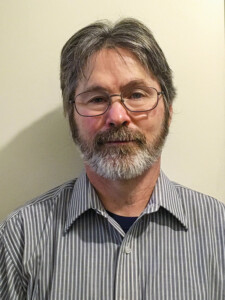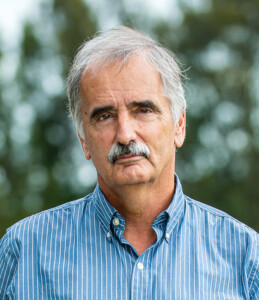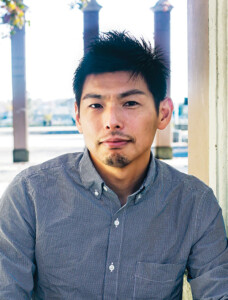The Graduates of Distinction Awards were established by the ESF Alumni Association to recognize the remarkable achievements of our alumni throughout the various stages of their careers. This year’s recipients serve as a testament to what can be accomplished when you pursue your passion and work to “Improve Your World,” especially when you are equipped with a degree from ESF. The award recognizes those alumni who have made outstanding contributions in their fields, whose work has positively impacted society and the environment, and who truly embody the spirit of environmental stewardship.
2021 Graduates of Distinction:
Call for Nominations
We are currently seeking nominations for the 2021 awards in all three categories. Lifetime Achievement is reserved for alumni who have ended or will soon end their active careers, Notable Achievement is for alumni who are in the early to mid-point of their careers, and Incipiens Quercu is geared toward our alumni who have recently graduated and are demonstrating their commitment to ESF’s environmental stewardship through their professional and/or volunteer work experience. Please keep in mind these awards are presented to those whose accomplishments might be considered “pioneering,” whose work has positively affected society, or who are otherwise inspirational to students and fellow alumni.
Nominations may be received from alumni or anyone who would like to see an alumnus receive one of these awards. Please visit www.esf.edu/alumni/distinction.php to complete an online nomination form or email alumni@esf.edu to request a nomination packet. Self-nominations are welcome. The nomination deadline is June 30, 2021.
Edwin J. Green ’79
Lifetime Achievement

Edwin J. Green ’79
After earning his master’s degree in silviculture and forest influences from ESF, Dr. Edwin Green continued his education at Virginia Tech, earning a Ph.D. in forest biometrics. His educational and research background from SUNY ESF and Virginia Tech led him to Rutgers University where he began a lifelong career challenging the conventional method of approaching statistical analyses as it applies to forest ecology.
Green has been a pioneering member of the forestry community through his early and continuing efforts to develop, apply, and raise awareness of Bayesian methods in forestry and ecology. Although Bayes’ Theorem was postulated in the 1700s, it remained largely of theoretical interest in ecological investigations prior to Green’s work utilizing Bayesian statistical methods in forestry research. He had a profound influence on the way statistical analyses are viewed in environmental and forestry applications and earned the highest regard of his peers in the biometrics community.
His statistical contributions are widely recognized, and he has deservedly been elected as a Fellow of both the Society of American Foresters and the American Statistical Association. He received the Rutgers University faculty merit award on multiple occasions. He held a temporary appointment as an academic visitor in the Imperial College of Science, Technology and Medicine, Department of Mathematics in London, and he served as a National Science Foundation panel member and as a member of a Technical Advisory Committee for the USDA Forest Service.
Green is the author or co-author of more than 75 publications in peer-reviewed scientific journals, including leading forestry and ecological research journals such as Forest Science, the Canadian Journal of Forest Research, Ecological Modeling, Tree Structure and Function, Tree Physiology, Photogrammetric Engineering and Remote Sensing and statistical research journals including the Journal of the American Statistical Association, The Statistician, and Biometrics. He was one of several statisticians who co-authored a landmark publication in Nature Human Behavior titled “Redefine Statistical Significance.” This publication has the potential to have wide influence regarding the measures of statistical significance and how such measures should be interpreted by statisticians and scientists.
Additionally, Green served as an educator of forestry professionals for more than 35 years. He recently retired from his position as a professor of natural resource biometrics in the Department of Ecology, Evolution and Natural Resources at Rutgers University where he helped a generation of students, both undergraduate and graduate, come to understand that the practice of forestry and the search for a greater comprehension of forests are worthy lifetime pursuits.
For his outstanding contributions to the field of forestry, the SUNY College of Environmental Science and Forestry Alumni Association is proud to recognize Dr. Edwin Green as the 2020 Graduate of Distinction – Lifetime Achievement award recipient.
Jeffrey J. Morrell ’77 and ’81
Notable Achievement

Jeffrey J. Morrell ’77 and ’81
After receiving both his B.S. and Ph.D. in environmental and forest biology from SUNY ESF, Dr. Jeffrey Morrell began a distinguished career in the field of wood preservation spanning over 35 years. Dr. Morrell began his academic career at Oregon State University where he concentrated on the area of wood deterioration and its prevention. His research focused on identifying the fungi associated with the deterioration process, assessing the potential for biological control of decay, developing methods for improving wood treatments, and systems for arresting decay once it has been initiated.
As a Distinguished University Professor in the Department of Wood Science and Engineering at Oregon State, he successfully advised 60 master’s and Ph.D. students and published over 700 articles in the area of wood protection. Morrell is active in national and international associations and has served as the president of the American Wood Protection Association and the international Research Group on Wood Protection. His contributions to the field have been recognized by his receipt of numerous awards. Most notably, he received the International Union Forestry Research Organizations Distinguished Scientist Award as well as the American Wood Protection Association Award of Merit and recognition as an Honorary Lifelong Member of the International Research Group on Wood Protection.
Additionally, Morrell has served as a member of the editorial boards for Madera Sciencia y Tecnologia, Wood and Fiber Science, and Holzforschung. He is proud to have been able to work with the late Professor Robert Zabel at SUNY ESF to co-author a textbook on wood microbiology.
In 2018, Morrell moved to Australia where he is currently the director of the National Centre for Timber Durability and Design Life, based out of the University of the Sunshine Coast. The Centre is a strategic initiative led by Forest Wood Products of Australia and is a partnership among industry, academia, and government designed to put Australia at the forefront of international best practice and use evidence-based data, systems, and tools to underpin consumer confidence in the performance of timber products. In particular, the goal over the next five years is to develop a predictive, evidence-based model to enable architects and building specifiers to more easily choose the right timber for the right task, accurately forecasting structural performance and design life.
While Morrell originally thought he would be a forester because he wanted to save trees, he sees his life-long career as having worked to achieve that by extending the service life of timber, which reduces the need to harvest additional wood. He is deeply appreciative of the excellent education he received at SUNY ESF as well as the exceptional support from so many distinguished faculty who served as positive role models in his career.
For his outstanding contributions in the field of wood preservation, the SUNY College of Environmental Science and Forestry Alumni Association is proud to recognize Dr. Jeffrey Morrell as the 2020 Graduate of Distinction Notable Achievement award recipient.
Makoto Hagi ’10
Incipiens Quercu

Makoto Hagi ’10
Makoto Hagi’s interest in landscape began at an early age. Growing up in an area surrounded by industrial sites generated an awareness of the negative impacts on natural systems and environmentally-deteriorated landscapes. As a practicing landscape architect, Hagi incorporates ecological processes, remediation efforts and aesthetic design into natural and built environments while promoting public awareness of our outdoor spaces.
After graduating from SUNY ESF in 2010, Hagi began his career working on several public space projects benefiting Western New York. Of particular note were the multi-phased Geneva Lakefront Park and shoreline improvements, the Erie Harbor Public Enhancements, and work on the Genesee Valley Park West master plan originally designed by Frederick Law Olmsted, and one of the three original parks in the Rochester Parks System.
A mere four years after graduation, Hagi and his team were awarded first place and winner of the certificate of merit for best overall project at the Slant Open International Design Competition. His team’s entry, “Safety Net,” focused on the development of a man-made living filtration component of the water cycle. Utilizing freshwater, brackish, and salt marshes, agricultural runoff and stormwater are intercepted and run through these natural filters thereby removing harmful chemicals and pollutants and allowing for remedial transition back into the large-scale water bodies.
In 2017 Hagi was selected as a winner of the National Grant Competition for Emerging Professionals in Landscape Architecture sponsored by Anova. Hagi’s innovative idea focused on salmon habitat restoration efforts within the Duwamish estuary, located just south of Seattle, Washington. Climate change and growth in commercial shipping within the estuary have led to increased storm surges flooding streambeds as well as washing away incubating eggs as gravel moves downstream. His concept incorporated a flexible scaffold-like structure adaptable to a variety of morphologies of the shoreline and was designed to support a tidal marsh system along the waterway.
Hagi’s accredited green roof professional credential and active involvement in many LEED projects are tangible commitments to promoting biodiversity in urban environments. He has taken innovative, experimental ideas from concept to construction and has contributed to environmental stewardship in multiple cities across the country through green infrastructure design and restoration efforts. Hagi’s leadership on multiple projects has integrated cutting-edge ideas in integrated stormwater design with the conservation of soils and vegetation, including Seattle Town Hall block and the Olmsted-designed Volunteer Park restoration. His contributions to recent projects in Seattle have led to a design strategy that exceeded the municipality’s sustainability goal to support healthy vegetation and mitigate the impact on storm and wastewater treatment infrastructure.
For his outstanding contributions in the field of landscape architecture, the SUNY College of Environmental Science and Forestry Alumni Association is proud to recognize Makoto Hagi as our Graduate of Distinction in the category of Incipiens Queru.


